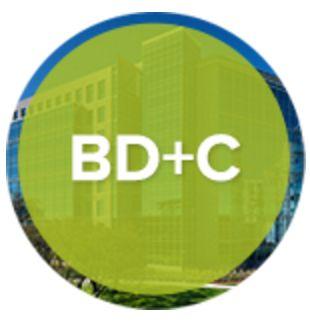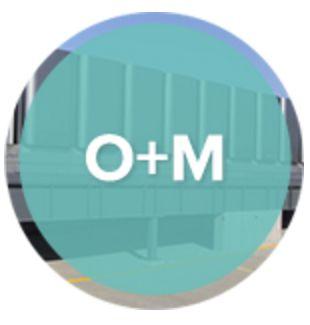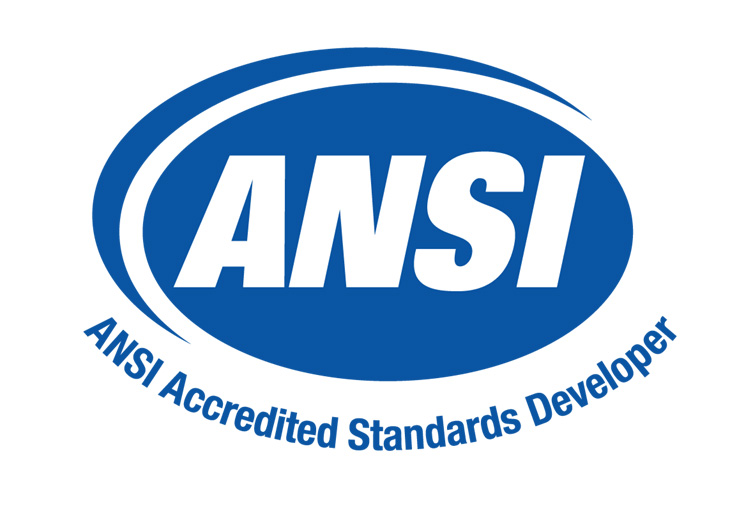LEED Certification
LEED is the U.S. Green Building Council's voluntary certification program for sustainable buildings. Learn all about the program's heat island credits for cool roofs and walls.
US Green Building Council's Leadership in Energy and Environmental Design (LEED)
Leadership in Energy and Environmental Design (LEED) is the U.S. Green Building Council's voluntary green building certification system. Under LEED v5 (released April 2025), the following rating systems award up to 2 points for heat island reduction under the Sustainable Sites Credit: Building Design and Construction (BD+C) for New Construction and Core & Shell, and 1 point for Operations and Maintenance (O+M) for Existing Buildings.
When cool roofs are used for the heat island reduction credit, the CRRC Rated Products Directory can be used to find products that meet the requirements.
Options, requirements, and points vary by rating system. The tabs below outline each rating system's requirements and options for seeking the heat island reduction credit.
Options, requirements, and points vary by rating system. The tabs below outline each rating system's requirements and options for seeking the heat island reduction credit.
Please Note: The CRRC has summarized these credits for the convenience of CRRC users. The CRRC does not intend to interpret the credit requirements. Please visit www.usgbc.org/LEED for more information on LEED programs and to read the requirements for each rating system.

The LEED v5 Building Design and Construction (BD+C) rating system for New Construction (April 2025) applies to buildings that are newly constructed or going through a major renovation. Under this rating system, up to 2 points may be awarded under the SS: Heat island reduction credit. There are three options for seeking this credit, listed below.
Compare roofing products by SRI in the CRRC Rated Products Directory to find products that meet the LEED requirements for obtaining this credit.
Requirements
Choose one of the following options:
Option 1. Nonroof and Roof (1 point)
Meet the following criteria for the nonroof and roof weighted average approach:
Equation 1. Weighted nonroof and roof calculation

Use any combination of nonroof, high-reflectance roof, and vegetative roof strategies so that the weighted sum of site design strategies is greater than or equal to the sum of the total pavement and roof areas. Each surface may only be counted once, even if it is addressed through multiple strategies.
Nonroof measures
Shade over pavement areas, measured in plain view at noon, with existing or new plants, assuming 10-year canopy width, or vegetated structures. Planting or vegetated structures must be in place at the time of occupancy permit.
Structures covered by energy generation systems, such as solar thermal collectors, photovoltaics, and wind turbines.
Architectural devices or structures. If the device or structure is a roof, it shall have an aged solar reflectance (SR) value of at least 0.28 as measured in accordance with ANSI/CRRC S100. If the device or structure is not a roof, or if aged SR information is not available, at installation it must have an initial SR of at least 0.33 as measured in accordance with ANSI/CRRC S100.
Paving materials with an initial SR value of at least 0.33.
An open-grid pavement system (at least 50% unbound).
High-reflectance roof
Use roofing materials that have an aged solar reflectance index (SRI) value equal to or greater than the values in Table 1. If aged SRI is not available, the roofing material shall have an initial SRI equal to or greater than the values in Table 1.
Table 1. Minimum SRI value, by roof slope
| Slope | Initial SRI | Aged SRI |
Low-Sloped Roof | ≤ 2:12 | 82 | 64 |
Steep-Sloped Roof | > 2:12 | 39 | 32 |
A roof area that consists of functional, usable spaces (e.g., helipads, recreation courts, swimming pools, and similar amenity areas) may meet the requirements of nonroof measures. Applicable roof area excludes roof area covered by mechanical equipment, solar energy panels, skylights, and any other appurtenances.
Vegetated roof
Install a vegetated roof using native or adapted plant species.
AND/OR
Option 2. Parking Under Cover (1 point)
Place 100% of parking spaces under cover. Any roof used to shade or cover parking must meet at least one of the following criteria:
Have an aged SRI of at least 32. If aged value information is not available, use materials with an initial SRI of at least 39 at installation.
Be a vegetated roof.
Be covered by energy generation systems, such as solar thermal collectors, photovoltaics, and wind turbines.
The credit calculations must include all existing and new off-street parking spaces that are subsidized, leased, or owned by the project, including parking that is outside the project boundary but is used by the project. On-street parking in public rights-of-way is excluded from these calculations.
AND/OR
Option 3. Tree Equity (1 point)
For all U.S. projects only, evaluate the American Forests Tree Equity score for the site location. For projects in areas ranked “high priority” and “highest priority,” use the results of the evaluation to inform an increase in on-site canopy cover from the existing condition.

The LEED v51 Building Design and Construction (BD+C) rating system for Core & Shell (April 2025) applies to buildings that are newly constructed or going through a major renovation. Under this rating system, up to 2 points may be awarded under the SS: Heat island reduction credit. There are three options for seeking this credit, listed below.
Compare roofing products by SRI in the CRRC Rated Products Directory to find products that meet the LEED requirements for obtaining this credit.
Requirements
Choose one of the following options:
Option 1. Nonroof and Roof (1 point)
Meet the following criteria for the nonroof and roof weighted average approach:
Equation 1. Weighted nonroof and roof calculation

Use any combination of nonroof, high-reflectance roof, and vegetative roof strategies so that the weighted sum of site design strategies is greater than or equal to the sum of the total pavement and roof areas. Each surface may only be counted once, even if it is addressed through multiple strategies.
Nonroof measures
Shade over pavement areas, measured in plain view at noon, with existing or new plants, assuming 10-year canopy width, or vegetated structures. Planting or vegetated structures must be in place at the time of occupancy permit.
Structures covered by energy generation systems, such as solar thermal collectors, photovoltaics, and wind turbines.
Architectural devices or structures. If the device or structure is a roof, it shall have an aged solar reflectance (SR) value of at least 0.28 as measured in accordance with ANSI/CRRC S100. If the device or structure is not a roof, or if aged SR information is not available, at installation it must have an initial SR of at least 0.33 as measured in accordance with ANSI/CRRC S100.
Paving materials with an initial SR value of at least 0.33.
An open-grid pavement system (at least 50% unbound).
High-reflectance roof
Use roofing materials that have an aged solar reflectance index (SRI) value equal to or greater than the values in Table 1. If aged SRI is not available, the roofing material shall have an initial SRI equal to or greater than the values in Table 1.
Table 1. Minimum SRI value, by roof slope
| Slope | Initial SRI | Aged SRI |
Low-Sloped Roof | ≤ 2:12 | 82 | 64 |
Steep-Sloped Roof | > 2:12 | 39 | 32 |
A roof area that consists of functional, usable spaces (e.g., helipads, recreation courts, swimming pools, and similar amenity areas) may meet the requirements of nonroof measures. Applicable roof area excludes roof area covered by mechanical equipment, solar energy panels, skylights, and any other appurtenances.
Vegetated roof
Install a vegetated roof using native or adapted plant species.
AND/OR
Option 2. Parking Under Cover (1 point)
Place 100% of parking spaces under cover. Any roof used to shade or cover parking must meet at least one of the following criteria:
Have an aged SRI of at least 32. If aged value information is not available, use materials with an initial SRI of at least 39 at installation.
Be a vegetated roof.
Be covered by energy generation systems, such as solar thermal collectors, photovoltaics, and wind turbines.
The credit calculations must include all existing and new off-street parking spaces that are subsidized, leased, or owned by the project, including parking that is outside the project boundary but is used by the project. On-street parking in public rights-of-way is excluded from these calculations.
AND/OR
Option 3. Tree Equity (1 point)
For all U.S. projects only, evaluate the American Forests Tree Equity score for the site location. For projects in areas ranked “high priority” and “highest priority,” use the results of the evaluation to inform an increase in on-site canopy cover from the existing condition.

The LEED v5 Operations & Maintenance (O&M) rating system for Existing Buildings (April 2025) applies to existing buildings. Under this rating system, 1 point may be awarded under the SS: Heat island reduction credit. There are three options for seeking this credit, listed below.
Compare roofing products by SRI in the CRRC Rated Products Directory to find products that meet the LEED requirements for obtaining this credit.
Requirements
Implement strategies to minimize the project’s overall contribution to heat island effects that meet the criteria outlined in Equation 1 below:Equation 1. Nonroof and roof calculation

Alternatively, a solar reflectance index (SRI) and solar reflectance (SR) weighted average approach may be used to calculate compliance.
Use any combination of nonroof, high-reflectance roof, and vegetative roof strategies so that the weighted sum of site design strategies is greater than or equal to the sum of the total pavement and roof areas. Each surface may only be counted once, even if it is addressed through multiple strategies.
Nonroof Measures
- Provide shade over pavement areas, measured in plain view at noon, through:
Plants or vegetated structures that provide shade over paving areas (including playgrounds) on the site. For newly installed plants, base shade area on 10-year canopy.
Vegetated planters.
Structures covered by energy generation systems, such as solar thermal collectors, photovoltaics, and wind turbines.
Architectural devices or structures. If the device or structure is a roof, it shall have an aged SR value of at least 0.28 as measured in accordance with ANSI/CRRC S100. If the device or structure is not a roof, or if aged SR information is not available, it shall have an initial SR of at least 0.33 as measured in accordance with ANSI/CRRC S100.
Use paving materials with an initial SR value of at least 0.33.
Create an open-grid pavement system (at least 50% unbound).
High-Reflectance Roof
Use roofing materials that have an aged solar reflectance index (SRI) value equal to or greater than the values in Table 1. If an aged SRI is not available, the roofing material shall have an initial SRI equal to or greater than the values in Table 1.
Table 1. Minimum solar reflectance index value, by roof slope
| Slope | Initial SRI | Aged SRI |
Low-sloped roof | ≤ 2:12 | 82 | 64 |
Steep-sloped roof | > 2:12 | 39 | 32 |
A roof area that consists of functional, usable spaces (such as helipads, recreation courts, and similar amenity areas) may meet the requirements of nonroof measures. Applicable roof area excludes roof area covered by mechanical equipment, solar energy panels, skylights, and any other appurtenances.
Vegetated RoofIf newly installed, sufficient growing medium and plant material must be in place to provide full vegetative cover within three years.
Under LEED Version 4.1, one point will be awarded for the installation of a cool exterior wall product under the Heat Island Reduction Sustainable Sites Credit for the Building Design and Construction (BD+C) rating system. When a cool exterior wall product is used for the heat island reduction credit, the CRRC Wall Rated Products Directory can be used to find products that meet the requirements.
The USGBC published the “Heat Island Mitigation with Cool Walls” pilot credit on April 9, 2021. The intent of the credit is to reduce the Urban Heat Island (UHI) effect through the use of cool exterior wall products.
To achieve the credit, at least 60% of the building’s gross exterior wall area (including vertical fenestration) must be surfaced with a wall material that has a solar reflectance of at least 0.60 and thermal emittance of at least 0.75.

